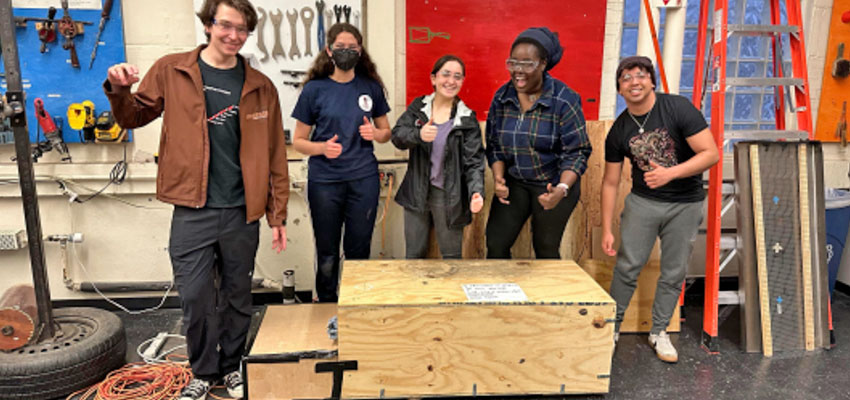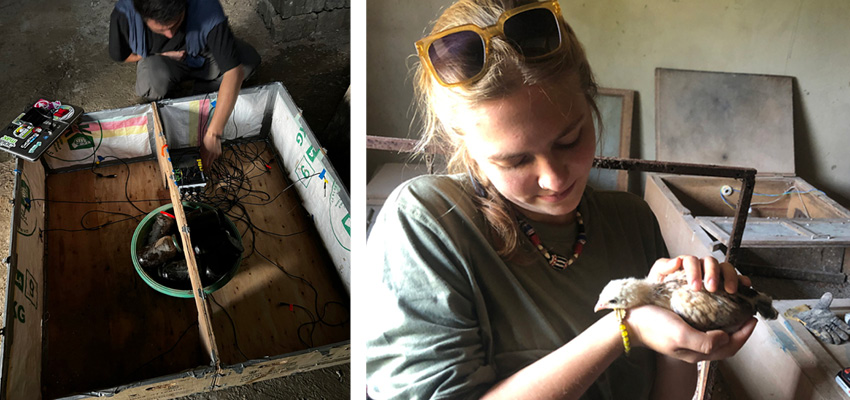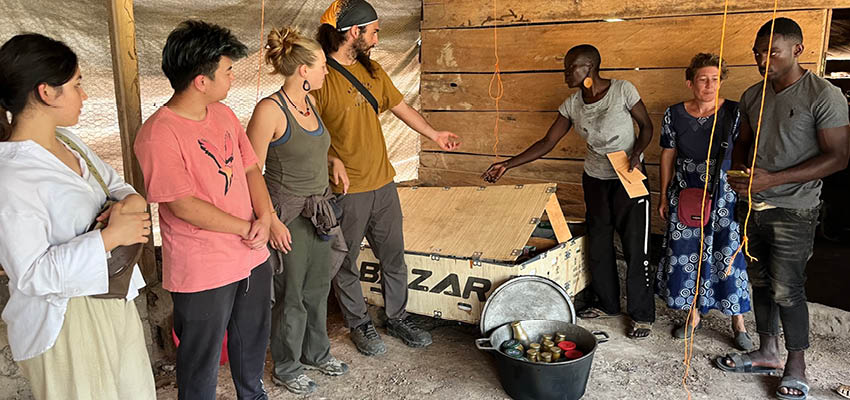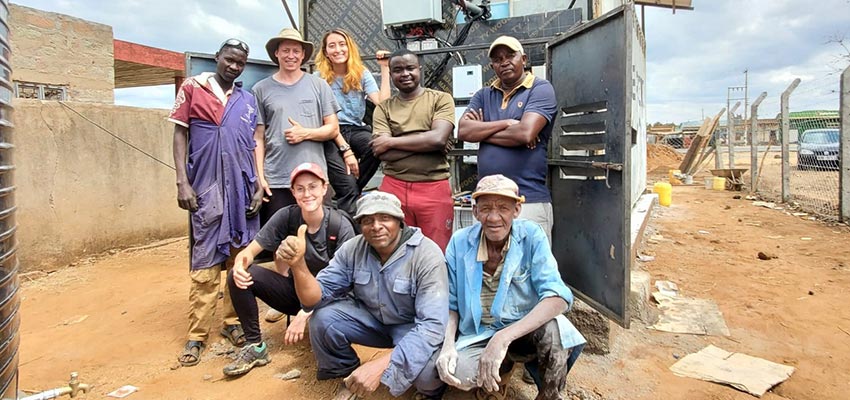
This iteration of the Cameroon Chick Brooder utilizes an external heating chamber with hot water as a cheap, sustainable, accessible alternative to firewood.
MIT D-Lab Class
Introduction to Energy in Global Development
Community partners
- BiObala
- JP Fokoua
- African Solar Generation (ASG)
- Lionel Wassoumi
- Antenna Foundation
- Joel Jeanloz
Location
Cameroon – Obala and Yaoundé
Student team
- Iselle Barrios '25 Chemical Engineering: "I am interested in climate change mitigation and adaptation."
- Christian de Weck '23 Mechanical Engineering: “I am studying mechanical engineering and pursuing a minor in German. I am interested in sustainable development and green energy solutions.”
- Sarah Hernandez '25 Chemical Engineering: “I am passionate about the intersection of chemical engineering, energy studies, and economics in enabling the green energy transition.”
- Luis Ibarra '23 Mechanical Engineering: “I am a senior studying mechanical engineering with a concentration in sustainable and global development and I’m interested in the future development of Latin America.”
- Steph Khaguli '23 Mechanical Engineering: "I have a keen interest in the execution of sustainable and global development with a human centered focus, and how the engineering design and problem-solving process is shaped by different socioeconomic and cultural contexts."
Problem framing
Upon hatching, chicks are unable to maintain body temperatures and require a source of heat to maintain temperatures for the first 6 weeks of life. Brooder designs range from simplistic insulating boxes to digitized electric boxes. Prior D-Lab Energy project teams innovated on existing chick brooder boxes by introducing phase change materials (PCM) such as paraffin and beeswax as heat sources. In our review of the previous team’s work and through conversations with our partners, we found that the process for preparing beeswax PCM “thermal batteries” is challenging for farmers due to its time and effort requirements and safety concerns. This directed our project this semester, in which we investigated the feasibility of utilizing hot water as a heat source.
Market context
The poultry sector in Cameroon is substantive, accounting for 1.4 billion USD or 4% of the country’s total GDP. As of 2020, poultry exports were valued at 1.37 million USD while exports were valued at 1.87 million USD, suggesting a demand for local production. To meet this demand, poultry production has grown at a rate of about 7% annually since 2010, having reached approximately 135,000 tons in 2015. Notably, 70% of poultry production in Cameroon is by small scale farmers, our project’s target audience.
Competitive analysis
Using water instead of wax as a heat source provides some advantages over the use of PCM thermal batteries. The most notable of these is a cost reduction. The cost of beeswax for thermal batteries constitutes a significant portion of the overall cost of constructing a brooder box. Replacing it with water, which is readily available in Obala, will help reduce the cost of the brooder box and make it more accessible to small-scale chicken farmers. Ideally, this would also reduce the amount of time required to prepare thermal batteries, since users would only have to boil water instead of boiling water then using it to melt wax.
Solution
Our team constructed and tested a heat chamber that was attached to the side of a ¼ size model of the chicken brooder box. This heat chamber held the container(s) of hot water and had an opening connecting it to the interior of the box, allowing controlled heat flow between the heat chamber and the interior of the brooder box. We found that about 7-8 kilograms of water contained in 10 glass mason jars in the heat chamber was able to keep the interior of the brooder box above 30 degrees Celsius for about 6-7 hours. We also found that about 11 kilograms of water in a pot was able to keep the interior of the brooder box above 30 degrees Celsius for about 7 hours. This is somewhat close to our target heating goal of at least 8 hours.
Next steps
One recommended next step would be to further explore options to extend the amount of time that hot water can keep the box within the desired temperature range. This could include the use of a greater mass of water, coupled with a mechanism such as a thermal actuator to control the release of heat from the heat chamber to the chicken box.
Contact
Dan Sweeney, MIT D-Lab Research Engineer; Instructor, Introduction to Energy in Global Development







